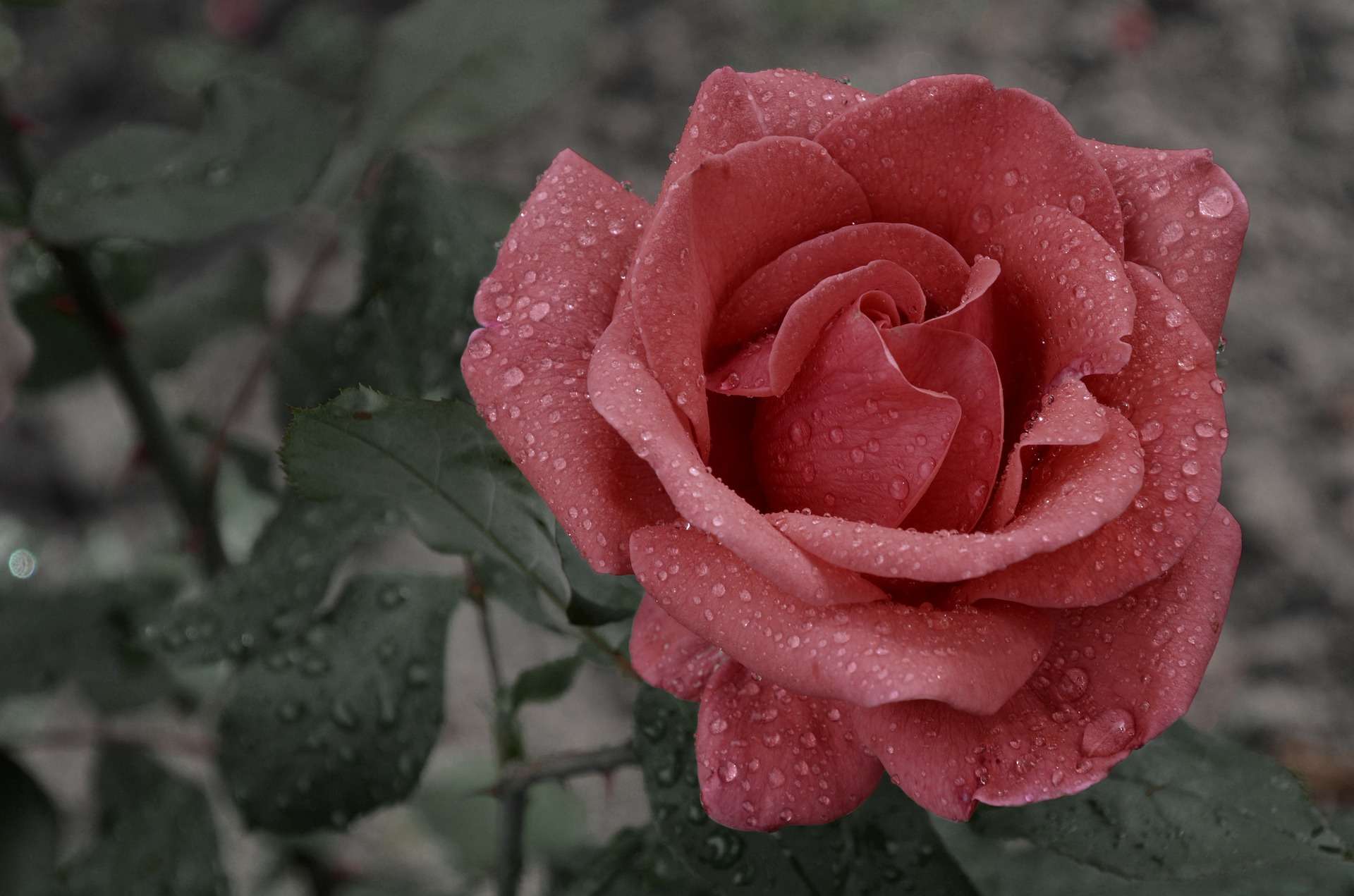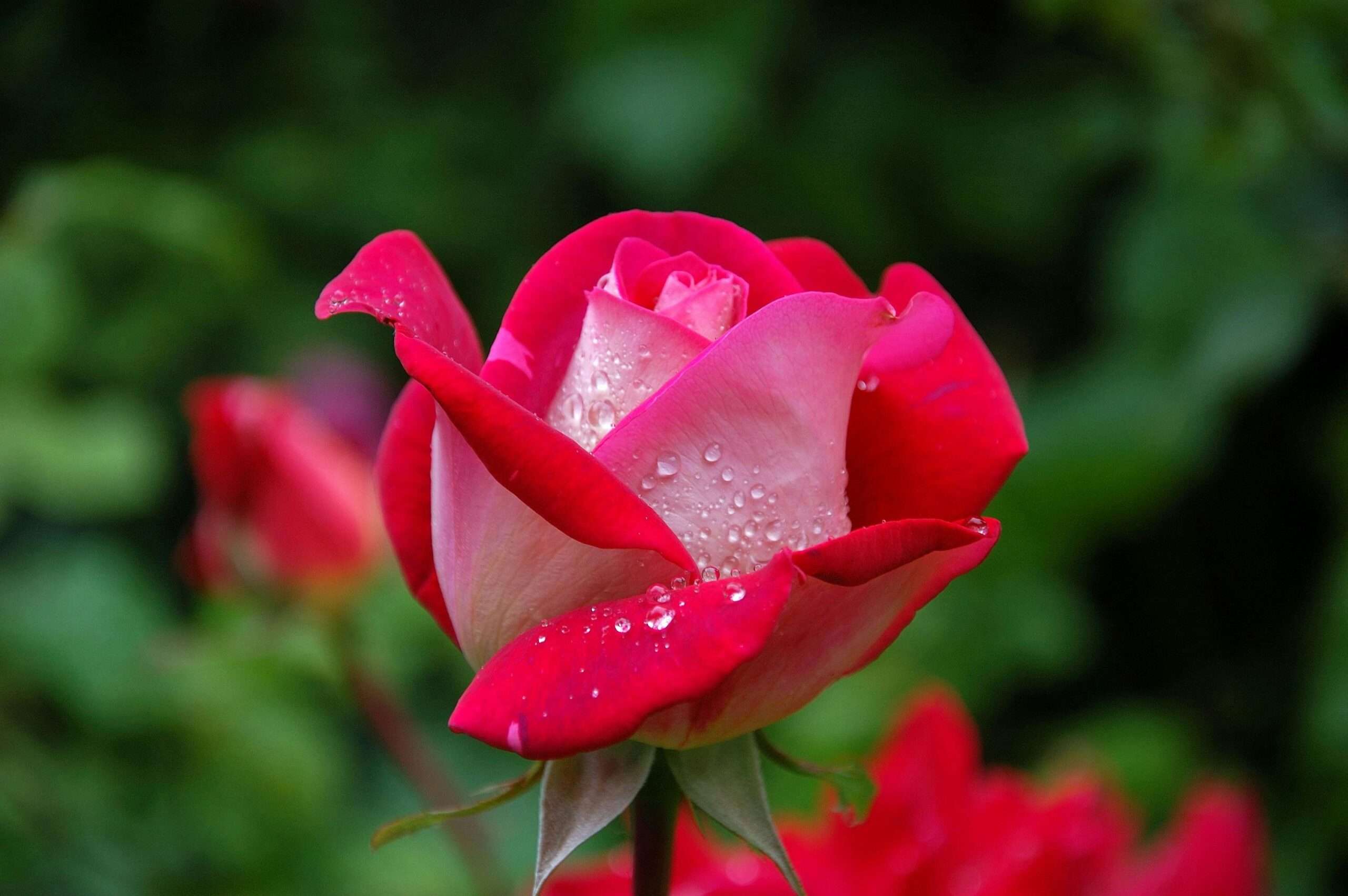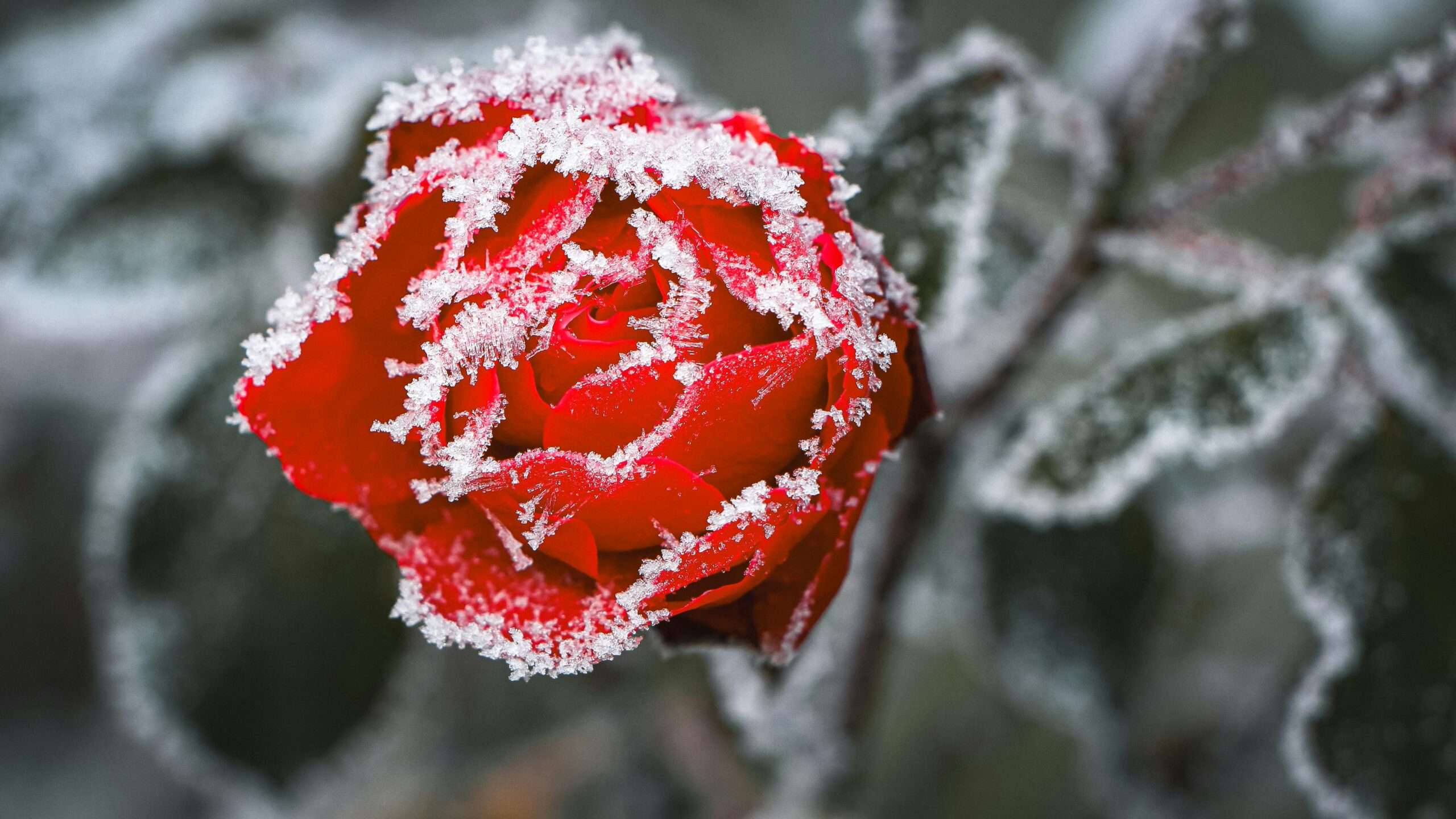Winter can be a real rollercoaster for gardeners, especially when it comes to pampering those precious roses. Roses might seem tough, but they’re like divas who need the royal treatment to shine in spring. This guide is your backstage pass to mastering how to care for roses in the winter, so buckle up and get ready to make your garden the envy of the neighborhood!
Table of Contents
1. Understanding the Needs of Roses in Winter

Assessing Your Climate
Let’s talk weather—because roses are pickier than a celebrity on a red carpet. Different climates mean different challenges for our floral friends.
- Importance of Climate: Roses in colder regions can get frosty feet, while those in warmer areas might just need a light sweater. Knowing your USDA hardiness zone is like having a weather forecast just for your roses.
- Climate Adaptation: Find out how your rose varieties handle winter in your neck of the woods. Local gardening experts are like your personal rose whisperers—tap into their wisdom for tailored advice.
Identifying Winter-Hardy Varieties
Choosing the right roses for your climate is like picking the perfect outfit for the occasion—essential for looking good and feeling comfortable.
- Winter-Hardy Varieties: Some roses, like the Rugosa and Canada Blooms, are built tough for chilly weather. They’re the Chuck Norris of roses—cold never bothers them anyway.
- Benefits of Hardy Roses: These beauties are low-maintenance, like a hairstyle that looks great without hours in front of the mirror. Less fuss, more time to sip cocoa and admire your garden.
2. Preparing Your Roses for Winter

Pruning Techniques
Time to give those roses a trim—it’s like a spa day before winter hits. Pruning keeps them healthy, prevents drama (diseases), and makes sure they’re dressed to impress.
- When to Prune: Think late fall—after the first frost, but before the serious cold. It’s like giving roses a haircut before they cozy up for their winter nap.
- How to Prune: Snip away dead or sickly bits, trim long canes, and shape them up nicely. Think of it as giving your roses a makeover—they’ll thank you with bigger smiles (blooms).
- Common Mistakes: Don’t go overboard with the scissors—roses don’t need a radical makeover. A light touch keeps them happy and looking fabulous.
Mulching and Insulation
Time to tuck those roses in for winter—mulch is like a warm blanket, keeping them cozy and protected from the cold.
- Importance of Mulching: Mulch isn’t just for looks—it’s like a security blanket, keeping soil cozy and pests out. Plus, it’s a great excuse to play in the leaves!
- Best Materials: Think natural—straw, leaves, or pine needles are like the organic skincare routine for your roses. Layer it on thick (6-12 inches) for maximum snuggle.
- Insulating the Plant: Add a little extra with burlap or rose cones—like putting on a winter coat. It shields them from harsh winds and keeps frosty fingers at bay.
3. Protecting Roses from Winter Elements
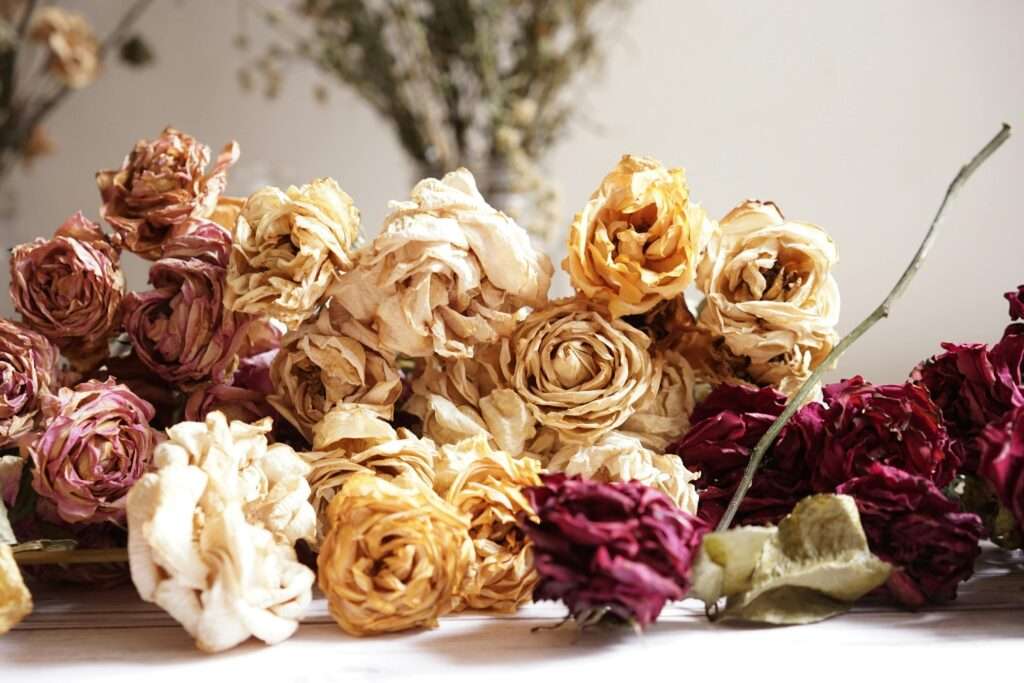
Wind Protection
Winter winds can be as harsh as criticism from your mother-in-law—protect those roses like they’re your favorite sweater.
- Shielding from Winds: Create windbreaks with burlap or sturdy structures—because nobody likes windblown hair (or roses).
- Effective Windbreaks: Evergreens are like nature’s bodyguards—plant them around your roses for VIP protection. They’ll thank you with fewer tangles (broken canes).
Frost and Freeze Protection
When the temperature drops, it’s time to play dress-up with your roses—frost and freezes are like surprise parties you didn’t RSVP for.
- Protective Strategies: Use rose cones or DIY covers with burlap and stakes—like making tiny tents for your floral friends.
- Covers and Shelters: Let them breathe—coverings need ventilation to avoid sweat (moisture buildup). Remove covers on warm days so they can stretch their petals.
4. Watering and Feeding Roses in Winter
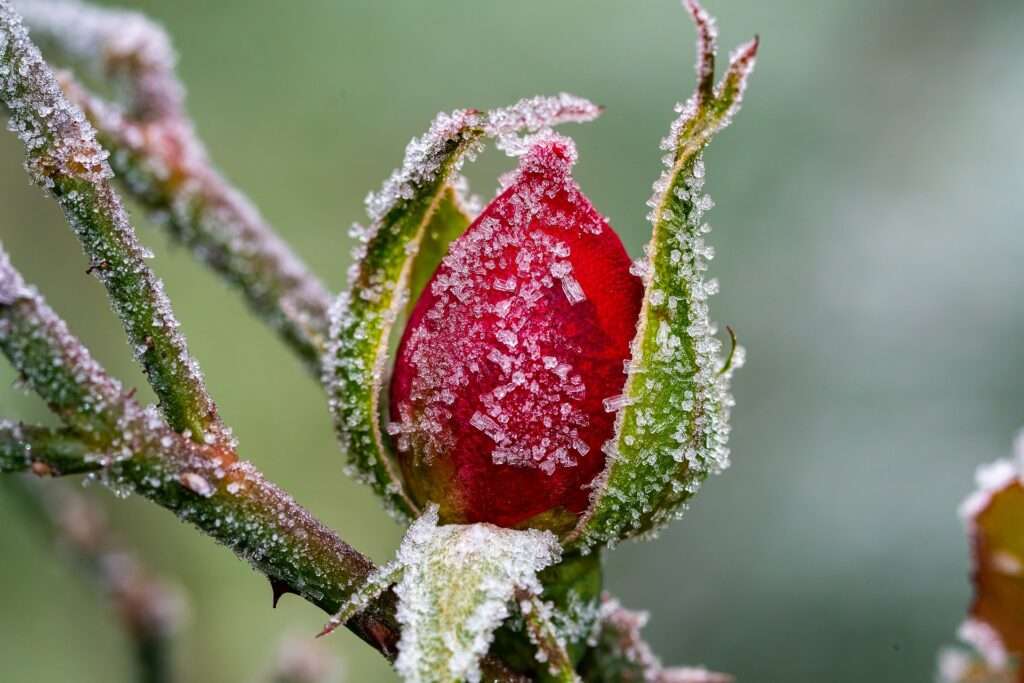
Adjusting Watering Practices
Winter watering is like Goldilocks—not too much, not too little, just right to keep roses happy without drowning them.
- Modifying Watering Routines: Deep drinks less often—it’s like giving roses a sip, not a gulp. Ensure the soil remains adequately damp without being overly saturated.
- Signs of Overwatering and Underwatering: Too much water makes roses waterlogged (pruney fingers), too little leaves them thirsty (cue sad wilt). Keep an eye on soil—roses can’t talk, but they’ll show you how they feel.
Winter Fertilization Tips
Feeding roses in winter is like giving vitamins—not too much candy, just enough to keep them strong and healthy.
- Fertilizing in Winter: Stop six weeks before frost—no late-night snacks for roses. Slow-release or organic compost is like health food for plants—slow and steady wins the race.
- Recommended Fertilizers: Go easy on the goods—organic or slow-release are like the fitness gurus of fertilizers. They keep roses toned without the crash (overgrowth).
5. Monitoring and Maintaining Rose Health
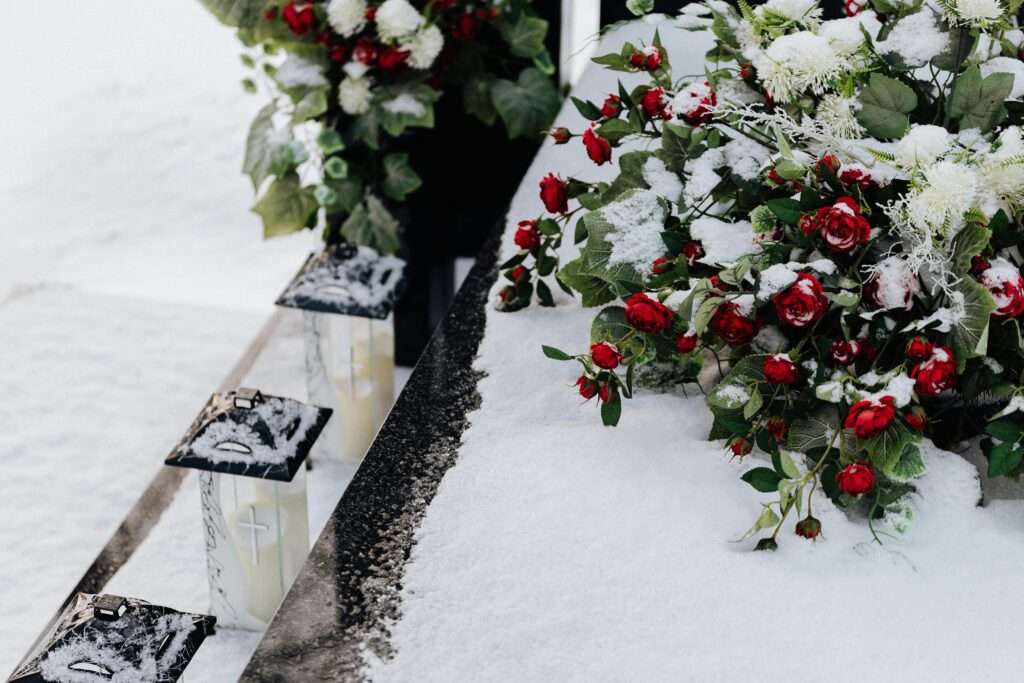
Regular Inspections
Winter check-ups are like doctor visits for roses—catching issues early means less drama later.
- Importance of Inspections: Look for pests, diseases, or anything out of the ordinary. Early detection saves headaches (and rose petals).
- What to Look For: Check canes, leaves, and roots—roses can’t speak up, so listen to their body language (visual cues).
Managing Pests and Diseases
Even in winter, roses attract troublemakers—pests and diseases are like unwanted guests at a party.
- Common Winter Pests and Diseases: Watch for aphids, spider mites, and other troublemakers. Diseases like black spot or powdery mildew are like colds—treat early to avoid spreading.
- Prevention and Treatment: Use oils to fend off pests—organic is like rose-friendly bug spray. Keep airflow good and remove any sickly bits—it’s like sending pests packing without harsh chemicals.
6. Special Considerations for Different Rose Types
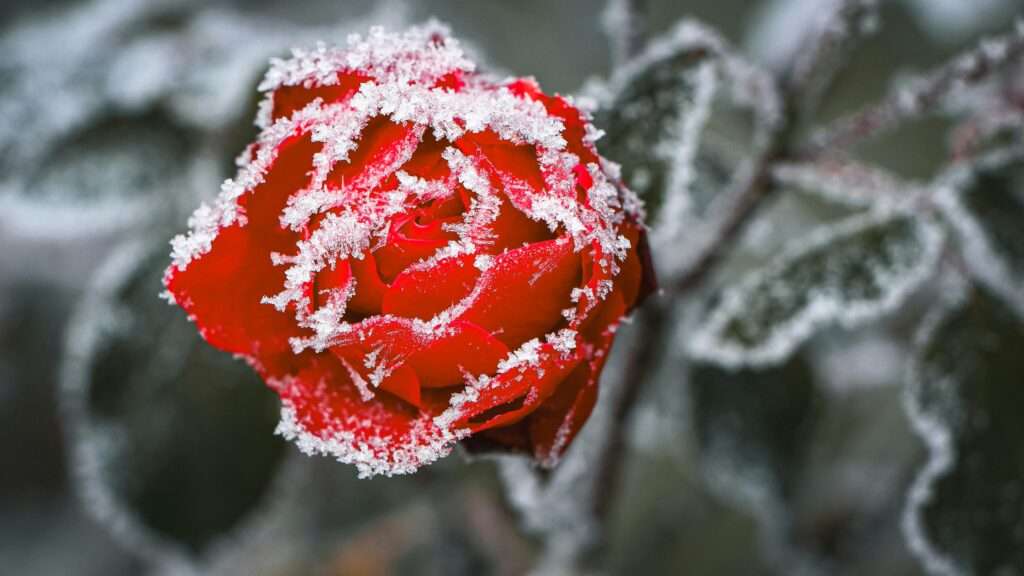
Caring for Climbing Roses in Winter: How to Care for Roses in the Winter Season
Climbers need a little extra TLC in winter—they’re like the wild child of the rose family, needing support and space.
- Winter Care for Climbers: Tie them up gently—like a rose ballet—so they don’t trip in the wind. Insulate their feet with mulch and give them room to spread their wings (canes).
- Securing and Protecting: Wrap canes in burlap for warmth—like a cozy scarf. Check ties often—they’re like a hug that shouldn’t squeeze too tight.
Managing Potted Roses
Potted roses are like pets—they need extra care when the weather gets rough, with roots out in the cold.
- Winter Care for Potted Roses: Bring them inside if you can—or tuck them in a sheltered spot. Insulate pots with bubble wrap—it’s like a puffer jacket for plants.
- Indoor and Outdoor Care: Water sparingly—roses don’t like wet feet indoors or out. Drainage is key—think of pots like shoes, they need to breathe.
Conclusion
Winter rose care is all about love and preparation. With these tips, your roses will strut into spring looking fabulous and feeling fantastic. Prune gently, mulch generously, and shield them from winter’s worst. Check in regularly, water wisely, and keep pests at bay. Your roses will reward you with blooms that’ll make your neighbors green with envy!
We hope this guide has given you the confidence to care for your roses like a pro, even when winter tries to throw a curveball. Here’s to a beautiful, blooming garden—happy gardening!
Read my blog Discover the Best Place for Roses to Grow: Amazing Tips & Spots
When is the best time to prune roses for winter?
The ideal time to prune roses for winter is after the first hard frost but before severe winter weather sets in. This allows the plant to enter dormancy, making it less susceptible to cold damage.
How should I protect my roses from frost and freezing temperatures?
You can protect your roses from frost by using rose cones or constructing covers with materials like burlap and straw. Ensure the covers allow for ventilation to prevent moisture buildup, which can lead to diseases.
What are the best types of mulch to use for winter rose care?
Organic materials such as straw, leaves, or pine needles make excellent mulch for roses in winter. Apply a thick layer around the base of the plant to insulate the roots and retain soil moisture.
Should I continue fertilizing roses during winter?
It’s generally recommended to stop fertilizing roses about six weeks before the first expected frost. This helps prevent new growth that is vulnerable to cold damage. If necessary, use slow-release fertilizers or organic compost sparingly.
How often should I inspect my roses during winter?
Regularly inspect your roses throughout winter for signs of damage, pests, or diseases. Early detection allows for timely intervention, ensuring your roses remain healthy and resilient until spring.

